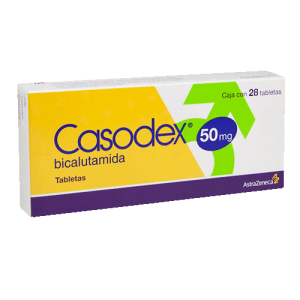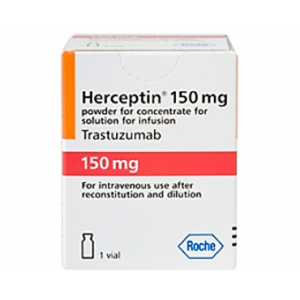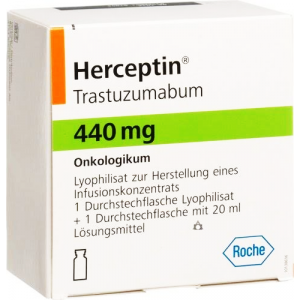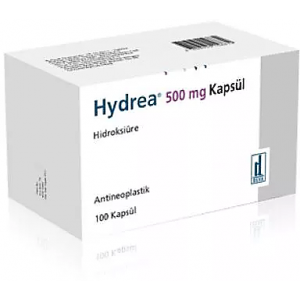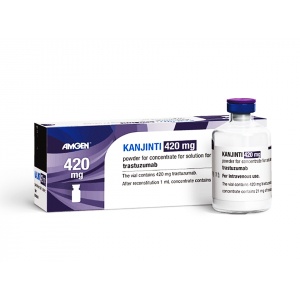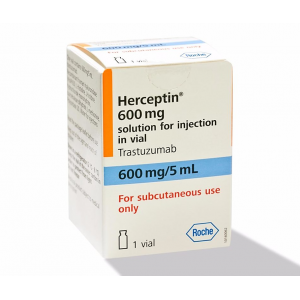- Anti-hestaminic & Respiratory Drugs (20)
- Anti-inflammatory Drugs (192) +-
- Baby & Mom (1305) +-
- Baby & Mom > Bath, skin & Hair > Skin Care > wibes (52)
- Beauty (2855) +-
- Beauty > Skin Care > whitening (273)
- Chemotherapy & Immune Response (880) +-
- Chemotherapy & Immune Response > ANTI-FUNGAL (11)
- Chemotherapy & Immune Response > Chemotherapeutic Agents > Hormone Antagonists >Enzyme Inhibitors (288)
- CIRCULATORY DISTURBANCE AGENTS (23)
- Diet & Fitness Products (278) +-
- DRUG AFFECTING CENTRAL NERVOUS SYSTEM (192)
- HEMATOLOGY (39)
-
Medical Supplies (504)
+-
- Chemicals & Disinfectants (19)
- Dental Supplies (32)
- Devices & Instruments (10)
- Diabetic Supplies (121)
- General Medical Supplies (21)
- I.V & Medical Solution (0)
- Intensive Care Unit & Anesthesia Supplies (0)
- KIDNEY UNIT SUPPLIES (21)
- Lab Supplies (3)
- Miscellaneous (21)
- Neonatal Unit Supplies (0)
- Operation Room Supplies (2)
- Sanitary (5)
- Sterilization Supplies (0)
- Surgical Sutures (4)
- Syringes (3)
-
Medicines & Health (2584)
+-
- Allergy & Sinus (94)
- Children's Health Care (54)
- Cough, Cold & Flu (275)
- Digestive Health & Nausea (225)
- Ear, Nose & Throat Care (177)
- Eye Care (117)
- Feminine Care (321)
- Foot Care (4)
- Orthopaedic Appliances (0)
- Pain Relief & Management (237)
- Pill Organizer (2)
- Skin Treatments (773)
- Sleep & Snoring Aids (2)
- Support & Braces (6)
- Medicines & health > Gout releif (42)
- Natural & Organic Products (81) +-
- OTC > Analgesics > Anti-inflammatory Drugs (44)
-
Personal Care (3155)
+-
- Bath & Body (256)
- Deodorant & Anti-perspirants (180)
- Ear, Nose & Throat Care (173)
- Eye Care (123)
- Feminine Care (370)
- Foot Care (12)
- Hair Care (448)
- Home Tests & Monitorings (14)
- Incontinence (7)
- Lip Care (22)
- Massage & Relaxation (17)
- Natural & Organic Personal Care (7)
- Oral Care (89)
- Pregnancy & Fertility (64)
- Shaving & Grooming (65)
- Sun Care (77)
-
Prescription Drugs (2862)
+-
- Analgesics (181)
- Cardiovascular System (374)
- Drugs Affecting Musculoskeletal System (65)
- Drugs Used In Infections (56)
- Ear & Nose Drugs (2)
- Endocrine System (176)
- Gastrointestinal Tract (242)
- Gastrointestinal Tract > Hepatology > Liver treatment (61)
- GYNECOLOGY (2)
- Miscellaneous (11)
- NEPHROLOGY > URINARY SYSTEM > RENAL DISORDERS > URINARY TRACT DISORDERS (46)
- NEUROLOGY (223)
- Nutrients & Blood Electrolytes (2)
- Respiratory System (152)
- SKIN > NAILS > HAIR > TOPICAL PREPARATIONS (63)
- Vaccines (1)
- Prescription drugs > Cardiovascular system > Anti-hypertension drugs (242)
- Sexual Wellness (296) +-
- Vitamins & Minerals Supplements (1192) +-
Ex Tax: 15,014EGP
Example
You can return the product within 14 days of purchase.
ReturnsYou can return the product within 14 days of purchase.

injection, powder for reconstitution
- 150mg/single-dose vial (Herceptin, Hercessi, Ontruzant)
- 420mg/multidose vial (Herceptin, Ogivri, Hercessi, Herzuma, Trazimera, Kanjinti, Ontruzant)
- Ogivri (trastuzumab-dkst)
- Hercessi (trastuzumab-strf)
- Herzuma (trastuzumab-pkrb)
- Ontruzant (trastuzumab-dttb)
- Trazimera (trastuzumab-qyyp)
- Kanjinti (trastuzumab-anns)
Breast Cancer
Adjuvant treatment
- Indicated for adjuvant treatment of HER-2 overexpressing breast cancer
- In combination with doxorubicin, cyclophosphamide, and either paclitaxel or docetaxel
- Herceptin, Ogivri, Hercessi, Herzuma, Ontruzant, Trazimera, Kanjinti
- 4 mg/kg IV over 90 min, THEN
- 2 mg/kg IV over 30 min qWeek during chemotherapy for the first 12 weeks (paclitaxel or docetaxel)
- One week following the last weekly dose, initiate 6 mg/kg IV q3Weeks; infuse over 30-90 min
- Administer for a total of 52 weeks
- In combination with docetaxel and carboplatin
- Herceptin, Ogivri, Hercessi, Herzuma, Ontruzant, Trazimera, Kanjinti
- 4 mg/kg IV over 90 min, THEN
- 2 mg/kg IV over 30 min qWeek during chemotherapy for the first 18 weeks (docetaxel/carboplatin)
- One week following the last weekly dose, initiate 6 mg/kg IV q3Weeks; infuse over 30-90 min
- Administer for a total of 52 weeks
- As a single agent following completion of multi-modality, anthracycline-based chemotherapy
- Herceptin, Ogivri, Hercessi, Ontruzant, Trazimera, Kanjinti
- 8 mg/kg IV over 90 min, THEN
- 6 mg/kg as an IV over 30−90 min q3Weeks
- Administer for a total of 52 weeks
- Extending adjuvant treatment beyond one year not recommended
Administration
Images
Patient Handout
Formulary
Dosing & Uses
Adult
Pediatric
Dosage Forms & Strengths
injection, powder for reconstitution
150mg/single-dose vial (Herceptin, Hercessi, Ontruzant)
420mg/multidose vial (Herceptin, Ogivri, Hercessi, Herzuma, Trazimera, Kanjinti, Ontruzant)
Biosimilars to Herceptin
Ogivri (trastuzumab-dkst)
Hercessi (trastuzumab-strf)
Herzuma (trastuzumab-pkrb)
Ontruzant (trastuzumab-dttb)
Trazimera (trastuzumab-qyyp)
Kanjinti (trastuzumab-anns)
Breast Cancer
Adjuvant treatment
Indicated for adjuvant treatment of HER-2 overexpressing breast cancer
In combination with doxorubicin, cyclophosphamide, and either paclitaxel or docetaxel
Herceptin, Ogivri, Hercessi, Herzuma, Ontruzant, Trazimera, Kanjinti
4 mg/kg IV over 90 min, THEN
2 mg/kg IV over 30 min qWeek during chemotherapy for the first 12 weeks (paclitaxel or docetaxel)
One week following the last weekly dose, initiate 6 mg/kg IV q3Weeks; infuse over 30-90 min
Administer for a total of 52 weeks
In combination with docetaxel and carboplatin
Herceptin, Ogivri, Hercessi, Herzuma, Ontruzant, Trazimera, Kanjinti
4 mg/kg IV over 90 min, THEN
2 mg/kg IV over 30 min qWeek during chemotherapy for the first 18 weeks (docetaxel/carboplatin)
One week following the last weekly dose, initiate 6 mg/kg IV q3Weeks; infuse over 30-90 min
Administer for a total of 52 weeks
As a single agent following completion of multi-modality, anthracycline-based chemotherapy
Herceptin, Ogivri, Hercessi, Ontruzant, Trazimera, Kanjinti
8 mg/kg IV over 90 min, THEN
6 mg/kg as an IV over 30−90 min q3Weeks
Administer for a total of 52 weeks
Extending adjuvant treatment beyond one year not recommended
Metastatic breast cancer
- Herceptin, Ogivri, Hercessi, Herzuma, Ontruzant, Trazimera, Kanjinti
- Indicated for HER2-overexpressing metastatic breast cancer as first-line treatment in combination with paclitaxel OR as a single agent for patients who have received 1 or more chemotherapy regimens for metastatic disease
- 4 mg/kg IV over 90 min, THEN
- 2 mg/kg IV over 30 min qWeek, continue until disease progression
Gastric Cancer
Herceptin, Hercessi, Ogivri, Ontruzant, Trazimera, Kanjinti
Indicated, in combination with cisplatin and capecitabine or 5-fluorouracil, for patients with HER2-overexpressing metastatic gastric or gastroesophageal junction adenocarcinoma who have not received prior treatment for metastatic disease
8 mg/kg IV over 90 min, THEN
6 mg/kg IV q3wk; infuse IV over 30-90 min, continue until disease progression
Dosage Modifications
Modifications required for serious adverse events, including hypersensitivity reaction (anaphylaxis), infusion reactions (fatalities), decreased left ventricular function, and pulmonary events (ARDS)
Infusion reactions
- Decrease infusion rate for mild-moderate infusion reactions
- Interrupt infusion if dyspnea or clinically significant hypotension
- Strongly consider permanent discontinuation if severe and life-threatening infusion reactions
Cardiomyopathy
- Assess LVEF prior to initiation and frequently during treatment
- Withhold for at least 4 weeks
- ≥16% absolute decrease in LVEF from pretreatment values
- LVEF below institutional limits of normal and ≥10% absolute decrease in LVEF from pretreatment values
- Resume drug if, within 4-8 weeks, the LVEF returns to normal and absolute decrease from baseline is ≤15%
- Permanently discontinue for a persistent (>8 weeks) LVEF decline or for suspension of drug on >3 occasions for cardiomyopathy
Dosing Considerations
Do not substitute with or for ado-trastuzumab emtansine or fam-trastuzumab deruxtecan
Patient selection
- Select patients based on HER2 protein overexpression or HER2 gene amplification in tumor specimen
- Perform assessment using FDA-approved tests specific for breast or gastric cancers by laboratories with demonstrated proficiency
- FDA-approved tests for detection of HER2 protein overexpression and HER2 gene amplification is available at: https://www.fda.gov/CompanionDiagnostics
Interactions:
Contraindicated (0)
Serious (13)
axicabtagene ciloleucel
brexucabtagene autoleucel
ciltacabtagene autoleucel
daunorubicin
doxorubicin
doxorubicin liposomal
epirubicin
etrasimod
idarubicin
idecabtagene vicleucel
lisocabtagene maraleucel
ropeginterferon alfa 2b
tisagenlecleucel
Monitor Closely (158)
abatacept
abemaciclib
acalabrutinib
ado-trastuzumab emtansine
alemtuzumab
anakinra
antithymocyte globulin equine
antithymocyte globulin rabbit
azacitidine
azathioprine
baricitinib
basiliximab
beclomethasone, inhaled
beclomethasone, intranasal
belatacept
belimumab
betamethasone
bleomycin
blinatumomab
brentuximab vedotin
brodalumab
budesonide
busulfan
cabazitaxel
canakinumab
capecitabine
carboplatin
carmustine
certolizumab pegol
chlorambucil
cisplatin
cladribine
clofarabine
copanlisib
corticotropin
cortisone
cyclophosphamide
cyclosporine
cytarabine
dacarbazine
dactinomycin
dasatinib
daunorubicin
deflazacort
dengue vaccine
dexamethasone
dinutuximab
docetaxel
doxorubicin
doxorubicin liposomal
duvelisib
eculizumab
efgartigimod alfa
efgartigimod/hyaluronidase
elotuzumab
emapalumab
epirubicin
estramustine
etanercept
etoposide
everolimus
fludarabine
fludrocortisone
fluorouracil
fluticasone inhaled
gemcitabine
gemtuzumab
glatiramer
golimumab
guselkumab
hydrocortisone
hydroxyurea
ibritumomab tiuxetan
ibrutinib
idarubicin
idelalisib
ifosfamide
imatinib
imiquimod
infliximab
inotuzumab
irinotecan
irinotecan liposomal
ixekizumab
leflunomide
lenalidomide
lomustine
mechlorethamine
melphalan
mercaptopurine
methotrexate
methylprednisolone
mitomycin
mitoxantrone
mogamulizumab
mycophenolate
natalizumab
nelarabine
nilotinib
obinutuzumab
ocrelizumab
ocrelizumab/hyaluronidase
ofatumumab
omacetaxine
osimertinib
oxaliplatin
paclitaxel
paclitaxel protein bound
palbociclib
panobinostat
pazopanib
pemetrexed
pentostatin
pomalidomide
ponesimod
pralatrexate
prednisolone
prednisone
procarbazine
ravulizumab
ribociclib
rilonacept
rituximab
rituximab-hyaluronidase
romidepsin
rozanolixizumab
ruxolitinib
sarilumab
secukinumab
siltuximab
siponimod
sirolimus
sorafenib
streptozocin
sunitinib
tacrolimus
temozolomide
temsirolimus
teniposide
teriflunomide
thalidomide
thioguanine
thiotepa
tocilizumab
tofacitinib
topotecan
trabectedin
tretinoin
triamcinolone acetonide extended-release injectable suspension
triamcinolone acetonide injectable suspension
trifluridine/tipiracil
ublituximab
ustekinumab
vedolizumab
vinblastine
vincristine
vincristine liposomal
vinorelbine
Minor (0)
Adverse Effects:
>10% (Metastatic Breast Cancer)
Pain (47%)
Asthenia (42%)
Fever (36%)
Nausea (33%)
Chills (32%)
Cough (26%)
Headache (26%)
Diarrhea (25%)
Vomiting (23%)
Abdominal pain (22%)
Back pain (22%)
Dyspnea (22%)
Infection (20%)
Rash (18%)
Anorexia (14%)
Insomnia (14%)
Dizziness (13%)
1-10% (Adjuvant Breast Cancer Treatment)
Headache (10%)
Nasopharyngitis (8%)
Diarrhea (7%)
Nausea (6%)
Pyrexia (6%)
Peripheral edema (5%)
Back pain (5%)
Chills (5%)
Asthenia (4.5%)
Myalgia (4%)
Hypertension (4%)
Dizziness (4%)
Influenza (4%)
Rash (4%)
Vomiting (3.5%)
Bone pain (3%)
UTI (3%)
Influenza-like illness (2%)
Nail disorders (2%)
Pruritus (2%)
Paresthesia (2%)
1-10% (Metastatic Breast Cancer)
Flu-like syndrome (10%)
Peripheral edema (10%)
CHF (7%)
Depression (6%)
Tachycardia (5%)
UTI (5%)
Anemia (4%)
Hypersensitivity (3%)
Leukopenia (3%)
Administration
Images
Patient Handout
Formulary
Dosing & Uses
Adult
Pediatric
Dosage Forms & Strengths
injection, powder for reconstitution
150mg/single-dose vial (Herceptin, Hercessi, Ontruzant)
420mg/multidose vial (Herceptin, Ogivri, Hercessi, Herzuma, Trazimera, Kanjinti, Ontruzant)
Biosimilars to Herceptin
Ogivri (trastuzumab-dkst)
Hercessi (trastuzumab-strf)
Herzuma (trastuzumab-pkrb)
Ontruzant (trastuzumab-dttb)
Trazimera (trastuzumab-qyyp)
Kanjinti (trastuzumab-anns)
Breast Cancer
Adjuvant treatment
Indicated for adjuvant treatment of HER-2 overexpressing breast cancer
In combination with doxorubicin, cyclophosphamide, and either paclitaxel or docetaxel
Herceptin, Ogivri, Hercessi, Herzuma, Ontruzant, Trazimera, Kanjinti
4 mg/kg IV over 90 min, THEN
2 mg/kg IV over 30 min qWeek during chemotherapy for the first 12 weeks (paclitaxel or docetaxel)
One week following the last weekly dose, initiate 6 mg/kg IV q3Weeks; infuse over 30-90 min
Administer for a total of 52 weeks
In combination with docetaxel and carboplatin
Herceptin, Ogivri, Hercessi, Herzuma, Ontruzant, Trazimera, Kanjinti
4 mg/kg IV over 90 min, THEN
2 mg/kg IV over 30 min qWeek during chemotherapy for the first 18 weeks (docetaxel/carboplatin)
One week following the last weekly dose, initiate 6 mg/kg IV q3Weeks; infuse over 30-90 min
Administer for a total of 52 weeks
As a single agent following completion of multi-modality, anthracycline-based chemotherapy
Herceptin, Ogivri, Hercessi, Ontruzant, Trazimera, Kanjinti
8 mg/kg IV over 90 min, THEN
6 mg/kg as an IV over 30−90 min q3Weeks
Administer for a total of 52 weeks
Extending adjuvant treatment beyond one year not recommended
Metastatic breast cancer
Herceptin, Ogivri, Hercessi, Herzuma, Ontruzant, Trazimera, Kanjinti
Indicated for HER2-overexpressing metastatic breast cancer as first-line treatment in combination with paclitaxel OR as a single agent for patients who have received 1 or more chemotherapy regimens for metastatic disease
4 mg/kg IV over 90 min, THEN
2 mg/kg IV over 30 min qWeek, continue until disease progression
Gastric Cancer
Herceptin, Hercessi, Ogivri, Ontruzant, Trazimera, Kanjinti
Indicated, in combination with cisplatin and capecitabine or 5-fluorouracil, for patients with HER2-overexpressing metastatic gastric or gastroesophageal junction adenocarcinoma who have not received prior treatment for metastatic disease
8 mg/kg IV over 90 min, THEN
6 mg/kg IV q3wk; infuse IV over 30-90 min, continue until disease progression
Dosage Modifications
Modifications required for serious adverse events, including hypersensitivity reaction (anaphylaxis), infusion reactions (fatalities), decreased left ventricular function, and pulmonary events (ARDS)
Infusion reactions
Decrease infusion rate for mild-moderate infusion reactions
Interrupt infusion if dyspnea or clinically significant hypotension
Strongly consider permanent discontinuation if severe and life-threatening infusion reactions
Cardiomyopathy
Assess LVEF prior to initiation and frequently during treatment
Withhold for at least 4 weeks
≥16% absolute decrease in LVEF from pretreatment values
LVEF below institutional limits of normal and ≥10% absolute decrease in LVEF from pretreatment values
Resume drug if, within 4-8 weeks, the LVEF returns to normal and absolute decrease from baseline is ≤15%
Permanently discontinue for a persistent (>8 weeks) LVEF decline or for suspension of drug on >3 occasions for cardiomyopathy
Dosing Considerations
Do not substitute with or for ado-trastuzumab emtansine or fam-trastuzumab deruxtecan
Patient selection
Select patients based on HER2 protein overexpression or HER2 gene amplification in tumor specimen
Perform assessment using FDA-approved tests specific for breast or gastric cancers by laboratories with demonstrated proficiency
FDA-approved tests for detection of HER2 protein overexpression and HER2 gene amplification is available at: https://www.fda.gov/CompanionDiagnostics
Interactions
Interaction Checker
Enter a drug name to check for any interactions.
Type a drug, OTC, or herbal name
and trastuzumab
All InteractionsSort By:
Severity
Contraindicated (0)
Serious (13)
axicabtagene ciloleucel
trastuzumab, axicabtagene ciloleucel. Either increases effects of the other by immunosuppressive effects; risk of infection. Avoid or Use Alternate Drug.
brexucabtagene autoleucel
ciltacabtagene autoleucel
daunorubicin
doxorubicin
doxorubicin liposomal
epirubicin
etrasimod
idarubicin
idecabtagene vicleucel
lisocabtagene maraleucel
ropeginterferon alfa 2b
tisagenlecleucel
Monitor Closely (158)
abatacept
abemaciclib
acalabrutinib
ado-trastuzumab emtansine
alemtuzumab
anakinra
antithymocyte globulin equine
antithymocyte globulin rabbit
azacitidine
azathioprine
baricitinib
basiliximab
beclomethasone, inhaled
beclomethasone, intranasal
belatacept
belimumab
betamethasone
bleomycin
blinatumomab
brentuximab vedotin
brodalumab
budesonide
busulfan
cabazitaxel
canakinumab
capecitabine
carboplatin
carmustine
certolizumab pegol
chlorambucil
cisplatin
cladribine
clofarabine
copanlisib
corticotropin
cortisone
cyclophosphamide
cyclosporine
cytarabine
dacarbazine
dactinomycin
dasatinib
daunorubicin
deflazacort
dengue vaccine
dexamethasone
dinutuximab
docetaxel
doxorubicin
doxorubicin liposomal
duvelisib
eculizumab
efgartigimod alfa
efgartigimod/hyaluronidase
elotuzumab
emapalumab
epirubicin
estramustine
etanercept
etoposide
everolimus
fludarabine
fludrocortisone
fluorouracil
fluticasone inhaled
gemcitabine
gemtuzumab
glatiramer
golimumab
guselkumab
hydrocortisone
hydroxyurea
ibritumomab tiuxetan
ibrutinib
idarubicin
idelalisib
ifosfamide
imatinib
imiquimod
infliximab
inotuzumab
irinotecan
irinotecan liposomal
ixekizumab
leflunomide
lenalidomide
lomustine
mechlorethamine
melphalan
mercaptopurine
methotrexate
methylprednisolone
mitomycin
mitoxantrone
mogamulizumab
mycophenolate
natalizumab
nelarabine
nilotinib
obinutuzumab
ocrelizumab
ocrelizumab/hyaluronidase
ofatumumab
omacetaxine
osimertinib
oxaliplatin
paclitaxel
paclitaxel protein bound
palbociclib
panobinostat
pazopanib
pemetrexed
pentostatin
pomalidomide
ponesimod
pralatrexate
prednisolone
prednisone
procarbazine
ravulizumab
ribociclib
rilonacept
rituximab
rituximab-hyaluronidase
romidepsin
rozanolixizumab
ruxolitinib
sarilumab
secukinumab
siltuximab
siponimod
sirolimus
sorafenib
streptozocin
sunitinib
tacrolimus
temozolomide
temsirolimus
teniposide
teriflunomide
thalidomide
thioguanine
thiotepa
tocilizumab
tofacitinib
topotecan
trabectedin
tretinoin
triamcinolone acetonide extended-release injectable suspension
triamcinolone acetonide injectable suspension
trifluridine/tipiracil
ublituximab
ustekinumab
vedolizumab
vinblastine
vincristine
vincristine liposomal
vinorelbine
Minor (0)
Adverse Effects
>10% (Metastatic Breast Cancer)
Pain (47%)
Asthenia (42%)
Fever (36%)
Nausea (33%)
Chills (32%)
Cough (26%)
Headache (26%)
Diarrhea (25%)
Vomiting (23%)
Abdominal pain (22%)
Back pain (22%)
Dyspnea (22%)
Infection (20%)
Rash (18%)
Anorexia (14%)
Insomnia (14%)
Dizziness (13%)
1-10% (Adjuvant Breast Cancer Treatment)
Headache (10%)
Nasopharyngitis (8%)
Diarrhea (7%)
Nausea (6%)
Pyrexia (6%)
Peripheral edema (5%)
Back pain (5%)
Chills (5%)
Asthenia (4.5%)
Myalgia (4%)
Hypertension (4%)
Dizziness (4%)
Influenza (4%)
Rash (4%)
Vomiting (3.5%)
Bone pain (3%)
UTI (3%)
Influenza-like illness (2%)
Nail disorders (2%)
Pruritus (2%)
Paresthesia (2%)
1-10% (Metastatic Breast Cancer)
Flu-like syndrome (10%)
Peripheral edema (10%)
CHF (7%)
Depression (6%)
Tachycardia (5%)
UTI (5%)
Anemia (4%)
Hypersensitivity (3%)
Leukopenia (3%)
<1% (Adjuvant Breast Cancer Treatment)
Cardiac failure (0.5%)
Cardiac disorder (0.3%)
Hypersensitivity (0.6%)
Autoimmune thyroiditis (0.3%)
Ventricular dysfunction (0.2%)
Sudden death (0.06%)
Postmarketing Reports
Infusion reaction
Oligohydramnios or oligohydramnios sequence, including pulmonary hypoplasia, skeletal abnormalities, and neonatal death
Glomerulopathy
Immune thrombocytopenia
Tumor lysis syndrome
Warnings
| Black Box Warnings Cardiomyopathy
|
Contraindications
Hypersensitivity to drug/class/component or hamster protein
Cautions
Use extreme caution in cardiac disease, cardiotoxic agent history, ejection fraction decrease, pulmonary disease, elderly (see Black Box Warnings)
Verify pregnancy status of females of reproductive potential prior to the initiation of therapy (see Pregnancy)
CHF: At a median follow-up duration of 8 yr, the incidence of severe CHF (NYHA III and IV) was 0.8%, and the rate of mild symptomatic and asymptomatic left ventricular dysfunction was 4.6%
Exposure to trastuzumab during pregnancy or within 7 months prior to conception can result in fetal harm; females of reproductive potential should use effective contraception during treatment and for 7 months following last dose of trastuzumab
Tumor lysis syndrome (TLS) reported; patients with significant tumor burden (eg, bulky metastases) may be at a higher risk; patients could present with hyperuricemia, hyperphosphatemia, and acute renal failure which may represent possible TLS; providers should consider additional monitoring and/or treatment as clinically indicated
Cardiomyopathy
- Therapy can cause left ventricular cardiac dysfunction, arrhythmias, hypertension, disabling cardiac failure, cardiomyopathy, and cardiac death
- Can also cause asymptomatic decline in left ventricular ejection fraction (LVEF); there is a 4−6 fold increase in the incidence of symptomatic myocardial dysfunction among patients receiving drug as a single agent; the highest absolute incidence occurs when drug is administered with an anthracycline; withhold therapy for ≥16% absolute decrease in LVEF from pre-treatment values or an LVEF value below institutional limits of normal and ≥10% absolute decrease in LVEF from pretreatment values
- The safety of continuation or resumption of therapy in patients with therapy-induced left ventricular cardiac dysfunction has not been studied
- Patients who receive anthracycline after stopping Herceptin may also be at increased risk of cardiac dysfunction
- Cardiac monitoring
- Conduct thorough cardiac assessment, including history, physical examination, and determination of LVEF by echocardiogram or MUGA scan; the following schedule is recommended
- Baseline LVEF measurement immediately prior to initiation of therapy
- LVEF measurements every 3 months during and upon completion of therapy
- Repeat LVEF measurement at 4 week intervals if drug is withheld for significant left ventricular cardiac dysfunction
- LVEF measurements every 6 months for at least 2 years following completion of therapy as a component of adjuvant therapy
Infusion reactions
- Infusion reactions consist of a symptom complex characterized by fever and chills, and on occasion included nausea, vomiting, pain (in some cases at tumor sites), headache, dizziness, dyspnea, hypotension, rash, and asthenia
- In post-marketing reports, serious and fatal infusion reactions reported; severe reactions, which include bronchospasm, anaphylaxis, angioedema, hypoxia, and severe hypotension, reported during or immediately following initial infusion
- Onset and clinical course reported to be variable, including progressive worsening, initial improvement followed by clinical deterioration, or delayed post-infusion events with rapid clinical deterioration; for fatal events, death reported to occur within hours to days following a serious infusion reaction
- Interrupt infusion in all patients experiencing dyspnea, clinically significant hypotension, and intervention of medical therapy administered (which may include epinephrine, corticosteroids, diphenhydramine, bronchodilators, and oxygen)
- Patients should be evaluated and carefully monitored until complete resolution of signs and symptoms; permanent discontinuation should be strongly considered in all patients with severe infusion reactions
- There are no data regarding the most appropriate method of identification of patients who may safely be retreated after experiencing a severe infusion reaction
- Prior to resumption of infusion, the majority of patients who experience a severe infusion reaction may be pre-medicated with antihistamines and/or corticosteroids; while some patients may tolerate the infusions, others may have severe infusion reactions despite pre-medications
Pulmonary toxicity
- Therapy can result in serious and fatal pulmonary toxicity; toxicity includes dyspnea, interstitial pneumonitis, pulmonary infiltrates, pleural effusions, non-cardiogenic pulmonary edema, pulmonary insufficiency and hypoxia, acute respiratory distress syndrome, and pulmonary fibrosis
- Such events can occur as sequelae of infusion reactions; patients with symptomatic intrinsic lung disease or with extensive tumor involvement of the lungs, resulting in dyspnea at rest, appear to have more severe toxicity
Exacerbation of chemotherapy-induced neutropenia
- In randomized, controlled clinical trials, the per-patient incidences of NCI-CTC Grade 3−4 neutropenia and of febrile neutropenia were higher in patients receiving therapy in combination with myelosuppressive chemotherapy as compared to those who received chemotherapy alone; incidence of septic death was similar among patients who received therapy and those who did not
Preinfusion treatment
- Symptoms such as chills and/or fever observed in ~40% of patients
- Usually mild-to-moderate severity
- Pretreat with acetaminophen, diphenhydramine, and meperidine (with or without reduction in infusion rate)
Hypersensitivity and administration-related reactions
- Severe administration-related reactions (ARRs), including hypersensitivity and anaphylaxis, reported; patients experiencing dyspnea at rest due to complications of advanced malignancy and comorbidities may be at increased risk of severe or of a fatal ARR
- Grade 1-4 hypersensitivity and anaphylaxis reported with therapy; serious and fatal reactions reported after treatment with intravenous trastuzumab products; closely monitor patients for systemic hypersensitivity reactions, especially during first administration
- Permanently discontinue therapy in patients who experience anaphylaxis or severe hypersensitivity reactions; medications to treat such reactions, as well as emergency equipment, should be available for immediate use
- For patients experiencing reversible Grade 1 or 2 hypersensitivity reactions, consider pre-medication with analgesic, antipyretic, or antihistamine prior to readministration of therapy
Pregnancy & Lactation
- Pregnancy
May cause fetal harm when administered to a pregnant woman
In postmarketing reports, use of trastuzumab during pregnancy resulted in cases of oligohydramnios and of oligohydramnios sequence, manifesting as pulmonary hypoplasia, skeletal abnormalities, and neonatal death
Advise patient of the potential risks to a fetus
Herceptin pregnancy registry
If administered during pregnancy, or if a patient becomes pregnant while receiving trastuzumab or within 7 months following last dose, health care providers and patients should immediately report exposure to Genentech at 1-888-835-2555
Contraception
Verify pregnancy status of females of reproductive potential prior to initiating
Advise pregnant women and females of reproductive potential that exposure during pregnancy or within 7 months prior to conception can result in fetal harm
Advise females of reproductive potential to use effective contraception during treatment and for 7 months following last dose
- Lactation
No information regarding the presence of trastuzumab in human milk, the effects on breastfed infants, or the effects on milk production
Published data suggest human IgG is present in human milk but does not enter neonatal and infant circulation in substantial amounts
Trastuzumab was present in the milk of lactating cynomolgus monkeys but not associated with neonatal toxicity
Assess the developmental and health benefits of breastfeeding along with the mother’s clinical need for treatment and any potential adverse effects on the breastfed child from the drug or from the underlying maternal condition (unwrap)
Consider trastuzumab wash out period of 7 months
Pregnancy Categories
A: Generally acceptable. Controlled studies in pregnant women show no evidence of fetal risk.
B: May be acceptable. Either animal studies show no risk but human studies not available or animal studies showed minor risks and human studies done and showed no risk.
C: Use with caution if benefits outweigh risks. Animal studies show risk and human studies not available or neither animal nor human studies done.
D: Use in LIFE-THREATENING emergencies when no safer drug available. Positive evidence of human fetal risk.
X: Do not use in pregnancy. Risks involved outweigh potential benefits. Safer alternatives exist.
NA: Information not available.
Storage
Do not freeze
Unopened vials:
- Stable at 2-8°C (36-46°F) prior to reconstitution
- Trazimera only
- May be stored at room temperature (up to 30°C [86°F]) for single period of up to 3 months in original carton to protect from light
- Once removed from refrigerator, do not return to refrigerator and discard after 3 months or by vial expiration date, whichever occurs first
- Write revised expiration date in space provided on carton labeling
Vials reconstituted with BWFI
- Store in refrigerator
- Discard after 28 days
Vials reconstituted with SWI
- 420-mg multi-dose vial: Use immediately and discard unused portion
- 150-mg single-dose vial: Use immediately or store refrigerated for up to 24 hr; discard any unused drug in vial after 24 hr
Diluted solution
- May be refrigerated (2-8°C) for up to 24 hr
- Diluted storage time is additional to time allowed for reconstituted vial
Write a review
Your Name:Your Review: Note: HTML is not translated!
Rating: Bad Good
Enter the code in the box below:


